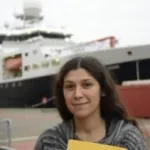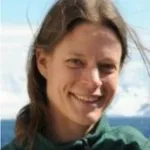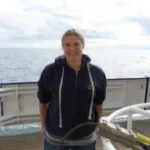- We will test the hypothesis that many chimney and pipe structures imaged on seismic reflection profiles in the North Sea represent
- a fracture network that has been reactivated by pore fluid pressure which facilitates the migration of fluids upwards; and
- shallow sub-seafloor lateral migration of fluids along stratigraphic interfaces and near-surface fractures.
- We will conduct a novel geophysical experiment (WP1), calibrated and tested by rock physics experiments (WP2) which will provide information on the physical properties of the overburden both within and outside chimney structures. Specifically we will provide information on fracture density, orientation, whether fractures are open or closed, and derive permeability.
- We will constrain and understand reactions with any leaking CO2 by geochemical characterization of cores collected within a chimney structure (WP3) and reactive transport modelling (WP4).
- We will model relevant and accurate scenarios of CO2 leakage associated with likely carbon capture and storage sites in the North Sea by numerical modelling (WP4), which will synthesize information determined from the other work packages.
Autosubs (Autosub 5, Autosub Long Range)
Surface vehicles (Waveglider, AutoNaut, C-Enduro)
Deep platforms (ROV, HyBIS)
Oceanographic sampling (sensor and mooring equipment)
Seafloor sampling (corers, dredgers, trawlers)
Geophysics (seismic surveys)
Ship systems
CHIMNEY







